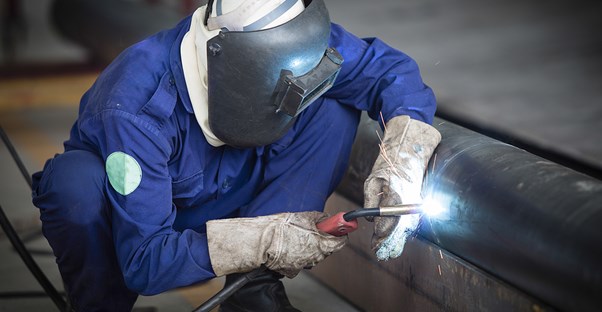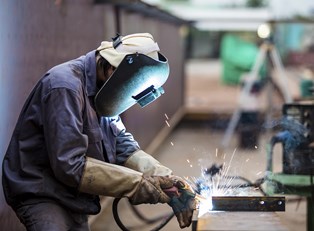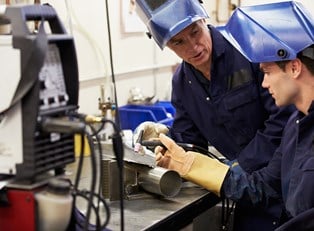Welding professions are found in all types of industries. Welders work with high-powered heating and melting tools to create joints and strengthen machinery by fusing materials together. Welders are essential to the building and manufacturing of all kinds of products, including factory equipment, kitchen appliances, cars, and buildings. If you think welding sounds like the career for you, here is some useful information on your potential salary and job outlook.
Median
The median salary for all welders, cutters, solderers, and brazers in the United States is $36,300 per year or around $17.45 per hour. Welders, cutters, solderers, and brazers are not strictly synonymous, but they all perform similar tasks and work with joining or cutting materials for manufacturing and building industries. The top 10% of all welders earn around $56,130, and the bottom 10% earn less than $24,720 per year.
Industry
Welders work in a variety of different industries, but some industries pay welders more than others. The top paying industries for welders are Electric Power Generation, Transmission, and Distribution, Natural Gas Distribution, Pulp, Paper, and Paperboard Mill, Services to Buildings and Dwellings, and Postal Service. Each of these industries has median salaries for welders between $56,000 and $66,000 per year, much higher than the national median across all industries.
Work Environment
Welders work in a variety of environments, some of which may be quite dangerous. They often work outdoors or in factories. Welders who work in Architectural and Structural industries often work on scaffolding that are high up off the ground. Additionally, many companies operate in multiple shifts per day, allowing the company or factory to operate round the clock. This means that welders often work in the evening or have varying shifts. Working overtime is common.
Job Outlook
In 2012, there were around 357,400 welding jobs in the United States. By 2022, this number is expected to grow by about 6%, producing around 20,800 new jobs. This rate of growth is relatively slow when compared to the average rate of growth across all occupations, which sits at about 11%.
Location
Like most occupations, location matters if you want a job in welding. While some occupations rely on high population levels, careers in welding depend on the amount of manufacturing employment in the state. The states that have the highest median salary for welders are Alaska, Hawaii, Washington D.C., Wyoming, and North Dakota. However, the states that have the highest level of employment among welders are Texas, California, Pennsylvania, Louisiana, and Illinois.




